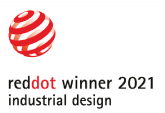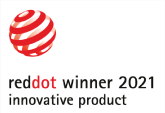Trig's take on CES 2018
Virtual reality, augmented reality, and the related sensory stimulation devices are all trying to fool the human brain into experiencing something completely different. The technology is getting good enough that it is hovering in the creepy uncanny valley zone where the expected familiar reality is just a bit off.
One of my favorite marketing tactics that I saw on display at CES was to have a booth that generated interest with quirky anti-brand KEEP OUT signs. It generates interest because everyone else is begging you to come into their booth with a flashy gadget demo, but the walled off keep-out virtual reality booth with a guarded entrance was so different that it evokes curiosity.
Speaking of creepy, Psychasec promised immortality through growing a new human body of your younger self and transporting your consciousness into the new body. “New Year, Same Me, New Body.” was the tagline flashing behind mannequins made to look like vat-grown humans. Around the sides of the booth were spray painted messages of “Immortality is Immoral” and “Boycott #psychasec “

The marketing team at Netflix deserves a standing ovation for this idea. The entire booth concept of Psychasec is a promotion for their latest sci-fi thriller Altered Carbon, airing February 2nd. As a content producer and distributor, they made a huge statement at the show without ever displaying the Netflix brand. If you are a bit unnerved at the pace of technology change, the show plays off those fears with dystopian exploration of the downside of change.
Dan Sullivan of Strategic Coach likes to frame this dynamic as Accelerators and Stabilizers. There are real human immortality projects in the works today like the Human Longevity Project, which Dan and Peter Diamandis are involved with. This pace of change has to be balanced with stabilizing forces of family, community, and governance that hold our society together. Immortality, if achievable, would come with a price tag that is reserved for the ultra-wealthy who may or may not have the best interests of the broader society in mind. The stabilizing discussion of the ethical implications of an unnatural selection of human longevity is just beginning.
Social media today such as Facebook and Twitter has suffered from the rapid pace of change and poor use of stabilizing tools. As such, those platforms today are mostly manipulation environments that should feel like a small town community of trusted friends, but instead feels like the cacophony of the Las Vegas strip. As a society, we seem to jump headfirst into the benefits of new technologies and later have to course-correct as the downside effects become obvious. Social media is relatively benign, but the new tech on the horizon might be harder to course correct after it achieves widespread adoption, as described in the dystopian sci-fi book Ready Player One by Ernst Cline or the Red Mars trilogy by Ken Stanley Robinson. Also, the recent Masters of Scale podcast episode with Caterina Fake, founder of Flickr discusses why social media lost its way and should have focused on being an online community.
That said, there were some really cool companies at CES who are using technology to accelerate and stabilize. As the father of three kids, I teared up hearing the founding story of Not Impossible. During the civil war in South Sudan, a boy had been able to take shelter from a bomb blast by hiding behind a tree. He had wrapped his arms around the tree and tragically lost both limbs. The CEO of Not Impossible had heard of his story and decided to do something about it. He found corporate sponsors to help acquire 3D printers that could build the required parts for custom prostheses. He then delivered the equipment to the Sudanese community and trained them in how to print low cost custom prostheses for the boy and other victims of the war that would not have otherwise been possible.
At CES 2018, Not Impossible was highlighting the Not Impossible Award winners; those who use technology to solve an absurdity in the world. While Not Impossible has several ongoing projects like the 3D printed prostheses that they could have promoted, they instead highlighted the work of others like Virtual Reality Project Delta for Innovation in Healthcare. Led by Dr Patrick Bordnick, Dean of the Tulane School of Social Work in New Orleans, LA, the program puts addiction recovery patients into realistic virtual worlds using smartphone based VR to recreate situations that trigger drug and alcohol cravings. This will allow the clinician to create more realistic role-playing scenarios that replicate the patients’ daily environment to teach and practice coping and avoidance strategies. Virtual Reality Project Delta makes the therapies more widely available at an affordable cost. I find Dr Bordnick’s work fascinating because it uses established clinical best practices for treating the biological and behavioral elements of addiction recovery, then uses technology to enhance the effectiveness of a trained therapist.
While Not Impossible seeks to remove absurdities from the world, plenty of companies at CES were prepared to create technological absurdities. Why not create a giant real world sword that connects to a MMO gaming environment with light and sound effects so that you can slash your way through virtual monsters? Perhaps the next generation will distinguish between back swing and follow through of the sword movement to be a little less awkward. The algorithms exist to make the distinction already, just need to pull it together.
Better yet, let’s create a sport of Mech Racing that requires a five point harness for the driver.

...Or modify an RV to be able to transport and launch a custom helicopter.

The company responsible for both technological absurdities, Furrion, definitely knows how to turn heads with engineering marvels.
It is easy to take for granted the air quality we enjoy in the US. The Asian market suffers from very poor air quality, making indoor air cleaning devices in high demand. South Korea-based Coway makes beautiful premium products for their air and water cleaning technology. I’ve followed them for a while in admiration, but their latest product is a stretch. Coway is promoting the idea that you bring home a particle cloud of polluted air that is shedding from your body into the home environment. Therefore, they built a Roomba-like air purifier that tracks where you walk in your home and sucks up all that polluted air. Of course, you could just buy a larger capacity stationary air purifier to solve the problem and not have to worry about tripping over the little helper when it sneaks up on you. I was fascinated that the pain of poor air quality in the Asian market is so great that Coway is willing to invest in prototyping and testing the demand for an air cleaning robot solution.
CES 2018 was filled with technologies trying to cross the uncanny valley of hacking human perception as VR/AR has become more widely accepted. I’ll admit, I would sit down for a VR demo just to rest my legs while walking the show. As a result of my coping strategy, I got to try out the super-cool 3D Rudder device that uses your feet to navigate a virtual environment. The VR flight simulator was incredibly fun as you pilot a ship through a futuristic city scene and try not to crash into buildings. It took me a few barrel rolls and flying upside down for a while to get the hang of it, but the Rudder controls quickly felt natural and intuitive compared to a joystick. While built for gaming, the company is developing plugins to be able to use it with professional 3D CAD programs like Rhino and SolidWorks, which is really exciting to see.
I was only slightly nauseous leaving the flight simulator. Part of this due to my vestibular system expecting gravitational direction to change with each barrel roll in the flight simulator. By far the loudest booth at CES, Samsung Galaxy had multiple full-body simulators on display, including a downhill ski and snowboard simulator and this crazy flying dinosaur simulator where the five point harness chair would rock the driver across three degrees of freedom to fully simulate gravity during flight. That was a big nope for me, but it was hilarious to watch others get tossed around on the virtual mechanical bull.



